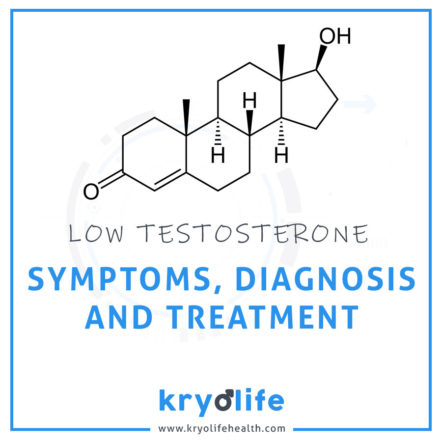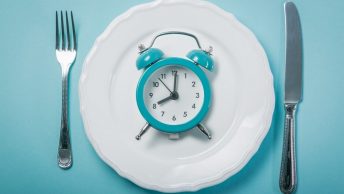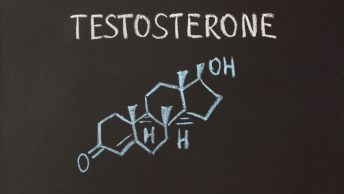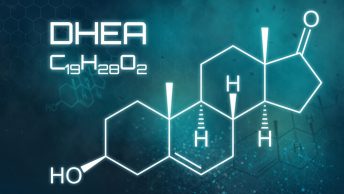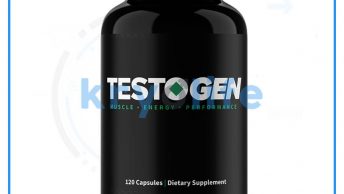Quick summary
- Testosterone is a vital male hormone with many functions, including reproductive and metabolic processes.
- Low testosterone, or hypogonadism, can have physical symptoms like decreased muscle mass and sexual dysfunction, as well as psychological effects like low self-esteem and mood swings.
- Treatment for low testosterone can include hormone replacement therapy, testosterone replacement therapy, supplements, or pituitary hormones, depending on the cause and individual concerns.
Testosterone1 is a vital male sex hormone that has a lot of other functions apart from reproduction.
It is mainly secreted by testicles in human males, while adrenal glands contribute a little towards the bulk.
Both males and females have testosterone hormone, wherein for the latter, production is contributed in small quantities by the ovary.
The decrease in production is what called as ‘hypogonadism,’ and it creates a lot of symptoms in males.
A decrease in t-hormone not only affects reproductive and sexual health but creates havoc in a lot of metabolic pathways.
Usually, a hormone replacement therapy is advised in extreme conditions, but steroids and natural testosterone boosters are the usual resorts in medical therapeutics.
In this article, we will explore the symptoms, common causes, diagnosis, and treatment for low testosterone.
So, without further ado, let’s start.
Read more: Best Natural Ways To Boost Testosterone Level
Low testosterone symptoms

Testosterone deficiency can be expressed as early as at the fetal stage of a baby.
Once the baby develops male gonads and fails to produce enough testosterone, it will result in impaired growth of sex organs.
This might lead to the development of ambiguous genitals, underdeveloped genitals, or even female genitals in some cases.
Hypogonadism during puberty has a different set of symptoms, which includes decreased muscle mass, lack of masculine characters, weak body & facial hair growth, etc.
In adults, the effects are much more prominent and easily detectible compared to other age groups.
Men with hypogonadism might experience erectile dysfunction, decreased beard growth, drop in muscle mass and bone mineral density, development of male breast and infertility in some cases.
In the majority of cases, the physical symptoms are more prominent and acute than the mental effects.
Some of the psychological effects of low T include:
- Low self-esteem
- Mood swings
- Hot flashes
- Difficulty in maintaining concentration
- Low sexual desire
Usually, tiredness or fatigue accompanied by some of the physical symptoms is how the body would project hypogonadism.
Low tesosterone causes
Testosterone deficiency (hypogonadism) in males can be attributed to two reasons, namely:
- Primary: Which can be due to a problem in the male testicle
- Secondary: Problem due to the signaling pathways involved in testosterone production.
Primary hypogonadism
This can happen due to a variety of reasons and some of which are:
- Cryptorchidism: During the developmental phase, the male testis develops in the abdomen and descends into the scrotum before birth. When this doesn’t happen, the testicles fail to produce enough hormone required for metabolic processes.
- Klinefelter Syndrome: This arises due to a congenital chromosomal abnormality in the sex chromosomes.
- Mumps orchitis: Testicular damage caused due to a mumps infection in the testicles.
- Physical injury to testicles: Testis is one of the injury-prone organs of the human body due to their protruded position, and this might result in some permanent damage to the testicles due to physical forces.
- Others: Other reasons include hemochromatosis and cancer therapy, which might have a direct impact on testicular secretion.
Secondary hypogonadism
Here the problem might be with intermediate signaling pathways or other hormones or organs involved in the testosterone production. For example:
- Pituitary disorder: This gland makes LH and FSH, which are very crucial for testosterone synthesis. Any deviations in its secretion from normal level affects testosterone production.
- Kallmann syndrome: If the hypothalamus of an individual is not developed properly, it might impair the pituitary secretions leading to decreased testosterone production.
- Obesity: Overweight is when the LDL cholesterol gets accumulated beyond its capacity leading to decreased testosterone production.
- Other reasons: Some of the other secondary causes of hypogonadism includes HIV/AIDS, aging, medications, other diseases, or even lifestyle.
Low testosterone diagnosis
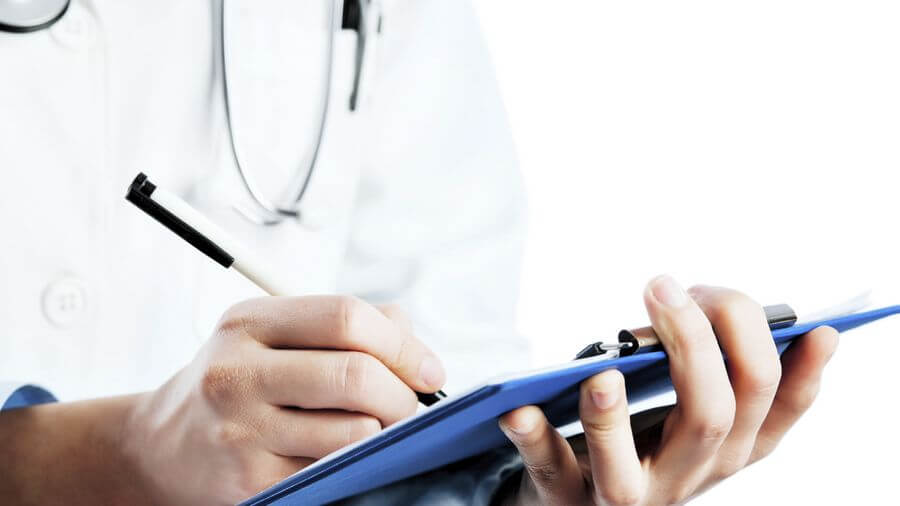
Depending on your age, the diagnosis pattern might change. In adults, the preliminary diagnosis is easy due to early symptoms they exhibit.
The doctor starts with physical examination during which he/she will examine the sexual characteristics, muscle mass, facial and pubic hair, presence of male breast and other obvious indicators.
Some of the other physical examinations include:
Measuring BMI to asses obesity
- Metabolic abnormalities that cause excess body fat accumulation
- Abnormal cholesterol levels causing symptoms like lethargy, dizziness, breathing difficulties, etc.
- Enlargement of the prostate gland.
- Testicular abnormalities or size variaitons.
A blood test is the initial diagnostic test to asses the testosterone levels and it is often done before 10 a.m. during which the levels are high.
For a normal male adult, it should vary anywhere between 270 ng/dL to 1070 ng/dL with a healthy average of 670 ng/dL.
Based on the variation in the blood test reports, a doctor might ask for further confirmatory tests.
This includes:
- Luteinizing hormone (LH) levels: Any abnormality in LH readings denote some problem with pituitary glands which creates testosterone deficiency.
- Hemoglobin levels: If hemoglobin levels are lower, it indirectly indicates hypogonadism.
- Follicle stimulating hormone (FSH) levels: To clinically confirm the hypogonadism, apart from LH, one might be asked to take an FSH test as well.
- Estradiol hormone: This test will indicate the development of the male breast.
- Bone density test: Since healthy levels of testosterone promote good bone mineral density, any abnormality in this value might be contributed by low testosterone.
- Karyotyping: It is done to find any chromosomal abnormalities.
- Prolactin levels: Higher prolactin levels are often caused by a pituitary disorder, which results in hypogonadism.
- MRI: For imaging the pituitary gland. Usually, the test results denote total testosterone and free testosterone where the former one shows the total amount of testosterone synthesized, and the latter one shows actual bioavailable testosterone remaining after protein activity.
Low testosterone treatment
Hypogonadism is not a devastating disease because there are a lot of treatment options available today.
The choice of therapy depends on the user’s concern about fertility and reproductive health.
- For a person suffering from primary hypogonadism or low testosterone caused due to the impaired testis, assisted reproduction is the best remedy to have a baby.
- In order to restore other testosterone-related functions, a hormone replacement therapy or testosterone replacement therapy (TRT)2 is the best choice. TRT will help the patient reduce bone loss, restore sexual features, and increase energy.
- If the testosterone deficiency is short term and not due to primary or secondary hypogonadism, a supplement3, is usually preferred. There are natural organic testosterone supplements made from herbal extracts and steroid-based products for bringing the t-hormone levels back to normal.
In young boys, TRT is often preferred as the best choice for restoring normal sexual character developments.
Pituitary hormones or alternatives are used to treat deficiency caused by pituitary gland disorder.
Types of testosterone replacement therapy (TRT)
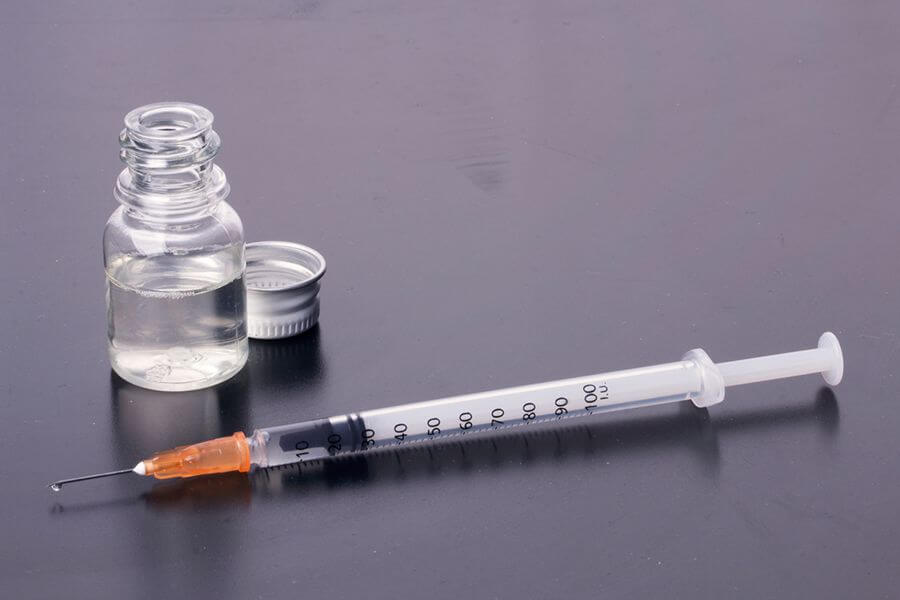
The objective of this treatment modality is to deliver testosterone into the bloodstream to combat the deficiency. Some of the common administration methods include:
Injection
Injecting testosterone4 is the permanent choice for people having permanent damage to testis.
The symptoms are more likely to be under control upon receiving a dose. It is often administered by self or kin.
Testosterone cypionate, Aveed, etc. are some of the commonly injected versions of t-hormone.
Gel
This is another easy mode of testosterone delivery by applying a coat of gel onto various body parts.
Some of the preferred areas include the skin of the upper arm, shoulder, armpits, on the front of the thighs, or side thighs.
The gel once dried get absorbed deep into the tissue and reaches the bloodstream.
However, one must be careful not to wash, wipe, or bath after applying the gel.
Patch
This is much easier compared to a gel, where a patch of testosterone like ‘andoderm’ is stick to the abdomen or thigs of the user every night before sleep.
Others
Some other less prevalent mode of administration includes gum and cheeks, nasal, or even as implants.
What can you expect after treatment?
The answer to this question is ambiguous because the human body is diverse and vary between individuals.
TRT is by far the most preferred and effective treatment available for hypogonadism.
Replacement therapy will reduce symptoms like erectile dysfunction, anemia, depression, and helps in increasing muscle mass.
Also, excessive tiredness and lethargy will be eliminated up to an extent giving a mental boost as well.
However, restoring reproductive ability is something that requires much more than TRT.
References
- Mauras, Nelly, et al. “Testosterone deficiency in young men: marked alterations in whole body protein kinetics, strength, and adiposity.” The Journal of Clinical Endocrinology & Metabolism 83.6 (1998): 1886-1892. https://academic.oup.com/jcem/article-abstract/83/6/1886/2865200
- Rhoden, Ernani Luis, and Abraham Morgentaler. “Risks of testosterone-replacement therapy and recommendations for monitoring.” New England Journal of Medicine 350.5 (2004): 482-492. https://www.nejm.org/doi/full/10.1056/nejmra022251
- Gruenewald, David A., and Alvin M. Matsumoto. “Testosterone supplementation therapy for older men: potential benefits and risks.” Journal of the American Geriatrics Society 51.1 (2003): 101-115. https://onlinelibrary.wiley.com/doi/abs/10.1034/j.1601-5215.2002.51018.x
- BARRACLOUGH, CHARLES A. “Production of anovulatory, sterile rats by single injections of testosterone propionate.” Endocrinology 68.1 (1961): 62-67. https://academic.oup.com/endo/article-abstract/68/1/62/2702432

